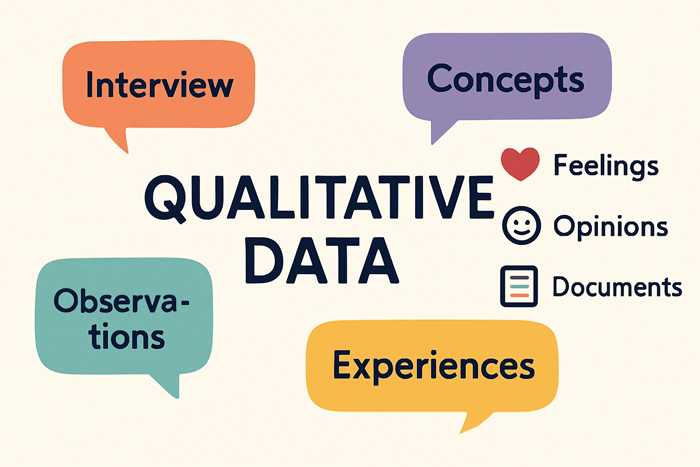Revision Notes
2.4 Research methods, sources and types of data
Types of Reserach Data
When researching for a media product, you’ll collect different types of data. Understanding the difference between qualitative and quantitative data helps you choose the right method for the information you need.
What is qualitative data?
Qualitative data is descriptive. It’s about opinions, experiences and explanations. This type of data helps you understand why people feel a certain way or what they think about a product.
It often comes from:
- Open-ended survey questions
- Focus group discussions
- Interviews
- User comments and feedback
Example: “I liked the video because the music was exciting and the visuals were really creative.”
Advantages of qualitative data:
- Gives detailed and rich insights
- Helps explain opinions and behaviour
- Useful for improving design or style choices
- Harder to measure or compare
- Can take longer to analyse
- Results may vary from person to person

What is quantitative data?
Quantitative data is numerical. It includes statistics, percentages, ratings and counts. This type of data helps you understand how many people think or act in a certain way.
It often comes from:
- Multiple-choice questionnaires
- Rating scales (e.g. 1 to 5 stars)
- Online surveys with measurable results
- Website or video view counts
Example: “78% of people preferred the second version of the logo.”
Advantages of quantitative data:
- Easy to measure and compare
- Can be shown using charts or graphs
- Useful for identifying trends
- Doesn’t explain why people gave their answers
- Less personal or detailed than qualitative data
- Can be limited by the questions asked

For the best results, media creators often use both types of data. This gives a full picture of what the audience thinks, feels and prefers.